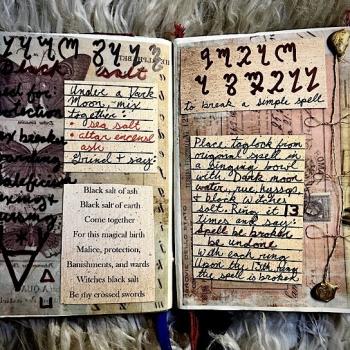[I’ve been posting on here only about once a week recently. I enjoy this, I’m able to have people see my writing, I think what I’m writing is important, but it is hard to find or justify the time when I’m dealing with issues like, “It’s more sensible to pay the electric bill rather than the cable bill. Internet won’t work anyway without electricity.” In theory I could earn money from this—if I had three times as many hits per month. But, of course, what I write doesn’t have the entertainment value of such sterling intellects as Kim Kardashian or Mr. Boehner. However, it occurred to me that I can post my current novel on here like a serial, the way Dickens published, and maybe more people would buy the whole novel. It’s worth a try.]
Prologue: First Murder
In the morning soldiers slammed open the wooden door to her cell. One walked over to her and shoved her down onto the rough cot. He forced her legs apart, rammed his cock deep inside her, and raped her, brutally. The others stood and laughed at her screams, then took their turns with her. When they were finished, they dragged her naked from her dungeon cell, up the stairs, and out into the courtyard.
The balconies on the walls of the ancient Italian castle, where three Roman generals had once carved up the Republic, were ringed with the Cardinal’s men, their families, priests, and monks. But none of the common people had been allowed inside.
“Here you are, gentle lords,” the soldier cried, throwing her to the ground. “Come f*ck the Witch while you can.” Half a dozen men walked to the center and raped her, their faces grotesque with malice, while the rest cheered and jeered at her cries.
The Cardinal’s courtiers began shouting, “Burn the witch! Burn the witch!”
The soldiers tied her to the stake in the middle of the courtyard and heaped hay and wood around her. A servant girl came with live coals. The soldiers lit the hay.
Flames leaped up around her. Suddenly she shouted, “Ubaldo Allucingoli, hear me! The fire you have lit to burn me will burn down your church, and no one will ever rebuild it, not in three days, not in three ages of the cosmos. But you will not be rid of me: I shall return to haunt you.”
Bending over, she breathed in sharply, deeply. There was a searing pain in her throat and chest, then there was nothing.
She did not scream and writhe as flames consumed her body; she was no longer in her body. The crowd was disappointed; it was boring.
Outside the castle a small crowd of peasants, largely women, stood weeping, watching the smoke rise into the sky.
The Cardinal stood in silence, thinking.
Prologue: Second Murder
JESUIT SCHOLAR KILLED IN ROME
Rome, Italy, April 23, 1995 (Reuters) — The body of Reverend Robert Marlowe, S.J., a visiting American scholar, was found in an alley near St. Peter’s early this morning.
Father Marlowe was Professor of New Testament Hermeneutics at the Graduate Ecumenical Seminary of the West in Santa Theresa, California. He was spending his sabbatical year in Rome, pursuing research in the archives of the Vatican Library.
Aldo Cardinal Tetrazzini, Vicar General of the Society of Jesus, stated, “Father Marlowe’s death is a calamity for Biblical scholarship and a tragic loss for the Society of Jesus as a whole. He was one of our most respected and popular teachers and authors.”
Detective Dante Gabriel Rossini of the Roman Police stated in his preliminary report that Father Marlowe’s death appeared to be a simple case of mugging and robbery. “However,” Officer Rossini admitted, “there are some odd factors that merit further investigation. We have no suspects at this time.”
I. A Package Arrives
Anodos kathodos (Heraclitus)
Walking down from my apartment, I contemplated the rooftops of Santa Theresa cascading down the hillside to the edge of the bay. I looked across the bay toSan Franciscoand the bridges, remem-bering how Bob had loved this vista. Scattered here and there in the blocks around me were the buildings of the schools that comprised the GESW. My chest contracted as I walked past the Jesuits’ buildings, where we had had so many long conversations while chowing down at their lunchtime buffet.
Mounting the steps into our old brick office building, I was feeling about six inches removed from reality. As I walked into the office downstairs, Sharonwas yelling at a young priest who was walking toward me, “That’s Professor Edwards’ package!”
I blocked his path. “May I see that?”
I grabbed it from him. It was addressed to me. I raised an eyebrow at him. He glowered, pushed his way past me, and walked rapidly away.
“Sharon, do you have any idea who that was?”
“No, though he looks somewhat familiar.”
I walked upstairs and put the package on my desk. That is where and when the path began that led to my relationship—no, to hell with that buzzword—to my ridiculously romantic collision with Andrea and the mysteries of magic, metaphysics, and witchcraft.
There was no return address. It was postmarkedRome.
Who do I know in Rome? Could this be from Bob?
Tearing the package open, I extracted a sheaf of paper about an inch thick, with a note from Bob on top.
Is Bob still alive? No, the Italian police and the news media would not have gotten that wrong.
The note read:
Dear Eddie,
I found these by accident and knew I had to get them to you immediately. I couldn’t copy them, but managed to smuggle them out. I don’t think I’ve made the staff here suspicious.
I found the originals hidden in a drawer devoted to an utterly different (and yet related) topic: Florentine economics. The one in Greek is a Gospel of Mary; it seems related to some known fragments, but is apparently complete. The Old Gaelic is a Gnostic gospel of Simon and Helen, fairly antinomian. The one in Italian is called the Gospel of Diana. It’s a gospel for witches! Brendan & Megan will love it.
Even skimming through them quickly . . .
(He skimmed them in three different languages—and we’ve lost that incredible mind.)
. . . I realized they must be dealt with openly. I could guess their significance only because of discussing witchcraft studies with you and reading some books you recommended. Others before me probably thought these were just patristic commentaries or pastiches. The anthropophagic minotaurs who lurk in this labyrinth certainly don’t want anyone else to ever see them.
If my suspicions are right, their suppression has been a far worse crime against humanity than my stealing them could possibly be. However, that the Curia lacks an adequate theology of the Holy Spirit is their problem, not mine.
Mazel tov, and let me know what you do with them.
Shalom,
Bob
I was breathing hard. I could feel my blood pressure spike. It was like discovering a fabled hoard of buried treasure—but of something far more valuable than gold or jewels, at least to me and the guys I talk shop with. A new Gnostic gospel! I love the Gnostics—but I’ll talk about them later.
I began speculating about what these gospels might be, what they might reveal about religious history. The speculations were abruptly interrupted by an apparently random thought:
Bob dies. These show up. Could Bob have been killed over these? Library theft might be considered serious, especially from the Vatican library, but it’s not usually a capital offense. Could someone have killed him while trying to get them back? But why?
Maybe it’s not a real swift idea to leave these pages lying on my desk.
I gathered them up, took them downstairs, and had Sharon lock them in the safe.
A graduate seminary seems an unlikely venue for murder and international intrigue—until one considers the passions that religion can arouse.
[If you’d like to read the rest of this sooner, you could order it from http://www.amazon.com/Goddess-Murder-Tale-Witches-Gnostics/dp/1461073901/ref=sr_1_25?ie=UTF8&qid=1374262611&sr=8-25&keywords=Aidan+Kelly]
I’d be grateful if you did.















